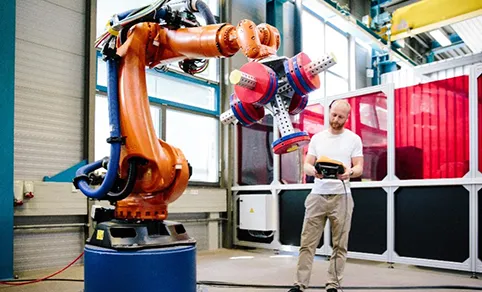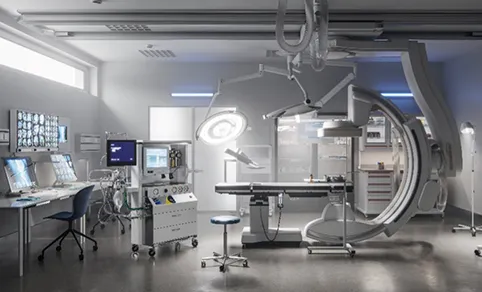What Is IEC 61508 SIL 3 for Industrial Systems?
IEC 61508 is an international standard that defines the safety requirements for electrical, electronic, and programmable electronic systems used in industrial environments. One of the key components of this standard is the Safety Integrity Level (SIL) system, which is used to classify safety-related systems in terms of their risk-reduction capabilities.
SIL 3 is the highest level of safety integrity defined by IEC 61508. It is intended for systems whose failure could result in a catastrophic event. To achieve SIL 3 certification, a system must be able to detect and respond to potential hazards in a timely manner and minimize the likelihood of a failure.

Industrial systems require risk reduction.
There are several key requirements that must be met in order to achieve SIL 3 certification. These include:
- A thorough safety analysis of the system, including a hazard analysis and a risk assessment
- The use of redundant and diverse safety functions, to ensure that the system can continue to operate safely even if one component fails
- The use of self-monitoring and diagnostic functions, to detect and diagnose potential failures before they occur
- The use of fail-safe and fail-secure design principles, to ensure that the system will not cause harm in the event of a failure
- The use of robust and reliable components and systems, to minimize the likelihood of a failure occurring in the first place
There are also strict testing and documentation requirements that must be met in order to achieve SIL 3 certification. These include rigorous testing of the system and the documentation of all safety-related aspects of the design, including the hazard analysis, risk assessment, and test results.
SIL 3 certification is a rigorous process, but it is an important one for industrial systems that are critical to safety. By achieving SIL 3 certification, these systems can demonstrate that they have been designed and tested to the highest standards of safety and reliability and that they can be trusted to operate safely in even the most demanding of environments.
What Is ISO 26262 ASIL D for Automotive Applications?
ISO 26262 is an international standard for functional safety in the automotive industry. It provides guidelines for the development, validation, and production of electrical and/or electronic systems in road vehicles.
One important aspect of ISO 26262 is the Automotive Safety Integrity Level (ASIL). This classification system helps determine the level of safety required for a particular system or component in a vehicle.
There are four different ASIL levels, ranging from A to D, with A being the lowest level of safety and D being the highest. The ASIL level is determined based on a risk assessment of the system or component in question, which takes into account factors such as the likelihood of a failure and the severity of the consequences if a failure were to occur.

Functional safety for automotive applications covers factors inside and outside of the vehicle.
For example, a system that controls the braking of a vehicle would likely be classified as ASIL D, as the consequences of a failure in this system could be severe. On the other hand, a system that controls the radio in a vehicle would likely be classified as ASIL A, as the consequences of its failure would be less severe. ASIL classification is important as it allows the automotive industry to prioritize the development and testing of certain systems and components in order to ensure the overall safety of the vehicle.
ISO 26262 includes guidelines for the development process and requirements for testing, validation, and documentation. It also lays out guidelines for the production process, including requirements for quality control and ongoing monitoring of the system or component.
What Is IEC 62304 for Medical Safety?
IEC 62304 is an international standard for the software development lifecycle (SDLC) of medical devices, published by the International Electrotechnical Commission (IEC). The standard covers a wide range of topics related to software development, including requirements management, design, testing, and maintenance. It is divided into four main sections: general requirements, development and maintenance, configuration management, and verification and validation.
One of the key principles of IEC 62304 is the concept of risk management. The standard requires that software developers identify and assess the risks associated with their products and implement measures to mitigate those risks. This includes conducting a risk analysis and developing a risk management plan that outlines how risks will be identified, assessed, and controlled throughout the software development process.

International standards have been set for medical device safety.
Another important aspect of IEC 62304 is the emphasis on testing and validation. The standard requires that software be thoroughly tested and validated to ensure that it meets the requirements and specifications set out in the design phase. This includes performing both functional and nonfunctional testing, such as testing for usability, performance, and security.
IEC 62304 also includes requirements for configuration management, which is the process of controlling and tracking changes to software throughout its development and maintenance. This includes maintaining a detailed record of all changes made to the software, as well as ensuring that the software is properly versioned and that different versions can be easily identified and distinguished.
How Can Wind River Help?
Wind River Diab Compiler
Wind River® Diab Compiler, the industry-leading compiler, boosts application performance, reduces memory footprint, and produces high-quality and standards-compliant object code for embedded systems. Wind River has a long history of providing software and tools for safety-critical applications requiring certification in the automotive, medical, avionics, and industrial markets. It’s backed by an award-winning global support organization that draws on more than 25 years of compiler experience and hundreds of millions of successfully deployed devices.

Wind River has years of experience providing software for safety-critical applications that require certification.
Key features
Key features of Diab Compiler include:
- Powerful optimization: Hundreds of optimization options for fine-tuning software for performance, footprint, or both
- Multiple architectures: Support for leading processor architectures (PowerPC, Arm®, TriCore, RH850, ColdFire, MIPS, and Intel®)
- Latest industry standards: Clang front end or Edison Design Group front end, LLVM and/or Dinkumware libraries, ANSI C11 and C++17 language standards conformance
- Key safety requirements: Support for ISO 26262 up to ASIL D and IEC 61508 up to SIL 4
- Reliable quality: Tested with millions of test cases and industry standard test suites; POSIX® PSE52 conformance runtime libraries
- Flexible business model: Perpetual licenses for one architecture, or annual per-developer subscription for all architectures
- Award-winning support: Service Capability and Performance (SCP)–certified support, available around the world in local languages
- Wind River Long Term Support Services: Support tailored to customers’ requirements
Functional Safety and Automotive-Grade Quality
With ongoing Diab Compiler updates (targeting both legacy/microcontroller platforms and high-performance compute platforms); the ISO 26262 (ASIL), IEC 61508 (SIL), and other qualifications; and key optimizing enhancements, Wind River reaffirms its commitment to providing the highest-quality safety software tools for automotive and other safety-conscious industries.
TÜV SÜD Certification
Suitable for developing safety-related software for both ISO 26262 (ASIL) and IEC 61508 (SIL) up to the highest defined levels of safety, Diab Compiler is now available in a safety certification package with the TÜV certificate, a safety manual, and technical and certification reports. Customers can use this package (following included guidelines, conditions, and restrictions) to deploy Diab Compiler as a TCL1–TCL3 tool for their all their safety projects needing the highest levels of functional safety. Diab Compiler’s safety portfolio supports ASPICE for automotive, and other long lifecycle safety markets such as avionics (DO-178B), nuclear (IEC 60880), railway (EN 50128), and industrial (IEC 61508).
» Learn More About Diab CompilerVxWorks Cert Edition
VxWorks® Cert Edition provides a commercial off-the-shelf (COTS) real-time operating system (RTOS) solution for delivering safety-critical applications that must be certified to the stringent requirements of safety standards, such as RTCA DO-178C and EUROCAE ED-12C software considerations in airborne systems, IEC 61508 industrial functional safety, IEC 62304 medical device safety, and ISO 26262 automotive safety. With VxWorks Cert Edition, you can take full advantage of technological advances in microprocessors that the VxWorks RTOS enables, with the assurance that you will have a strong OS foundation to meet the most demanding safety certification standards.
» Read the Product Overview

